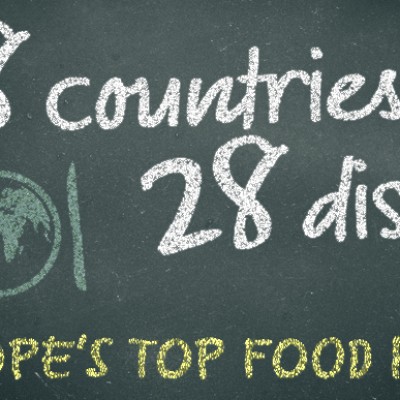Existing retailers in the United States during the holiday seasons have much to look forward to as the clock counts down to Christmas - long lines, over time compensation for employees who are willing to work, bolstered security measures to tame the wild herds of hungry and desperate shoppers, but most of all, a warm and jolly time that is nostalgic of cinnamon eggnog and gingerbread cookies baking in the oven. But besides the feeling of closeness and merry making among friends and family, the sound of cold hard cash funneling through registers cha-chinging in the back drop in regular intervals. Consumers in the United States - as a cultural annual tradition - bust open their piggy banks and break the boundaries of their budgets to spend freely on gifts, food, decorations, but mostly, Christmas trees.

The Extreme Commercial Phenomenon
All Americans celebrate Christmas. Well, at least 94% of Americans celebrate Christmas. Christmas in secular United States has become more a cultural phenomenon than a holy day celebrating the birth of a saint. The commercialization of the once sacred holiday has been cultivated and cured in the past several decades by retailers and marketers that it has turned into a holiday that is synonymous with paid time off and insane, almost heedless shopping.
People working in office buildings feel the most pressure to shop for Christmas gifts. The office is the environment where staffers frequently socialize with fellow coworkers and it is where the social pressure to give and receive gifts is strongest. While there is the paid time off to look forward to, there still is the hurdle of gift giving in the office to move forward from.
Outside of the office, gift exchange games like White Elephant and Secret Santa are common Christmas party activities at the center of almost all socialite circles in the states. This is what’s known as the American Christmas Madness. Fueled by all the money circulating the American economy during this time of avarice and feasting, Americans go nuts - pun intended - buying nut crackers as gifts, food for the back to back parties and potlucks, decorations for the house that are relevant for just a few days a year. The Obama family is no exception - the White House will be decorated with sixty three Christmas trees this year.
Holiday retail sales in the United States are expected to amount to $655.87 billion dollars this year. This projected number is 3.7% higher than the actual Christmas Madness spendings that of 2015. Americans are getting ahead of themselves this year, what with 1 million Americans reporting that they have already finished their Christmas shopping in September - four months ahead of schedule!
Americans plan to spend an average of $830 on Christmas gifts this year of 2016. This per capita spending is 15.3% more than the per capita expenditures spent in 2015 for gifts alone. Almost 1 in 3 Americans estimate that they will spend more than $1000 on gifts this year. This is absolute materialism born out of extreme capitalism - 30% of Americans will spend an amount for a single holiday in the US that is the equivalent of the amount that some households in developing countries make in living wages for an entire year.
Speaking of materialism - materialism and “stuff” seem to hold more weight than necessities such as food. Americans spend six times more money on gifts than they do on food. The gift giving and receiving cultural spiral during the holidays is so deserving of the word “bizarre” to outsiders looking in because the Christmas shopping season adds up to a quarter of all personal expenditures an American spends out of a whole year.
Greeting card vendors like Hallmark, Target, CVS, and other chain drugstores make a killing when it comes time for their heaviest hitting season - 2 billion Christmas cards are sent in the US each year. That’s a whole lot of paper flying off the shelves just to remind others to have a “Merry Christmas.” And 85% of those Christmas greeting card senders just so happen to be women. Speaking of having a “Merry Christmas,” it is the greeting of choice - 53% of Americans prefer seeing this greeting over other variations remarking on the same sentiment.
It appears that doing good and the spirit of giving back runs at all time highs in the holidays - Christmas is the biggest season in non-profit fundraising. 38% of Americans are more likely to donate during the Christmas season.
Christmas Spending to Hit Record in the UK
On the English side of the big Atlantic pond, Brits will spend about as much as the Americans during the most profitable holiday of the year - Brits are projected to splurge £77.56 billion this Christmas. Per household by the end of this year, the average spend for Christmas will be £809.97. The draping blue Christmas lights that hang over like branches of giant willow trees are not just installed for looks. It appears that the iconic streets of Oxford Circus has a multi-functional aspect to act as a magnet in its own right in attracting holiday shoppers like flies to a burning light. Adjacent shopping venues the likes of Selfridges, Urban Outfitters and American Apparel make like an all you can shop buffet for the holiday feasters that gather there from all over the world to experience the sights and shop-worthy sounds. Oxford Street offers all the most popular brands to satiate the gift grabbing hunger of both the local Londoners and shopping frenzied tourists alike.
We’ve spoken a lot about what their total spending is projected to pan out to be by the end of 2016. But now let’s take a look at the breakdown of the category of things that shoppers in the United Kingdom are going to be putting their money in. A single shopper in the UK is projected to spend £473.83 on gifts, £223.55 on food and drink (butter beer anyone?), £83.43 on holiday travel, and £29.16 on decorations. Given the not-exactly-cheap cost of transportation going to and from place to place in the UK, and London in particular, £83.43 that each person spends on holiday travel appears to account for just the cost of transport to get to a family’s home and back.
Similar to the situation in the United States, online spending this coming Christmas is predicted to be 12.9% higher than actual spendings on Christmas last year in 2015. A whopping £20.966 billion will be spent this year on Christmas shopping online.
This cultural drive for gift giving has such a high priority for people that 35% of British persons admit to borrowing money to pay for the gifts they bought in 2015.
In the UK, vendors that carry real Christmas trees in aggregate sell 8 million trees every single year.
The greeting card market has also much to profit from during Christmas in the UK - nine hundred million Christmas cards are sold in boxes and packs worth £200 million per annum. Charities in the UK also see a spike in donations, receiving an estimated £50 million in sales from a simple item like Christmas cards! You can say, “‘Tis the season to be giving” alright.
What is stunning about this consumerist culture that has gone apparently mad is that despite all the expenditure, effort and energy put into gift giving that the average person spends for Christmas each year, there is an incredible £2.6 billion market worth of adults in the UK who say that the Christmas gifts they received, sadly, were unwanted. Indeed, the commercialization and commoditization of Christmas has become a culture worthy of the title “madness.”
Speaking of madness born from a societal habit of waste, over 4 million Christmas dinners are thrown away each year in the UK. The number of Christmas dinners thrown out equates to about £64 million worth of food.
Christmas - religion or culture?
For some countries, Christmas is a sacred day birthed from the canals of mainstream religion. For other countries that have moved into secularized society, the once holy day has been relegated to a “cultural” celebration reminiscent of a once significant sacred day. Regardless of country however, Christmas is regarded as both a religious and cultural celebration among billions of people around the world.
For Christians though - we all know the story - Christmas is the celebration of the birth of Jesus Christ. The first ever recorded time in history when Christmas was celebrated on December 25th was in A.D. 336. Jesus’s exact birth date is much debated however, as it is neither known nor confirmed. The executive decision made in the years Before Christ which Christians have settled on was the 25th of December to celebrate the birth of Christ for lack of a definitive date.
The commercial component of Christmas as a cultural celebration rather than a religious celebration would come much later. Children growing up in the United Kingdom, United States and in many other countries have been opening up Christmas presents on Christmas day as a tradition as societies became more modernized. However, certain countries with strong religious affinities that compete with Christianity would prohibit the celebration of Christmas. Countries like Saudi Arabia deem December 25th as just another day; it should be nothing special. Jesus who?
Countries like the United States, however, celebrate Christmas as one of its most celebrated holidays, granting its working class several days, even weeks of vacation days - or paid time off. Get paid to sit at home and eat milk and cookies? Yes, please. The Christmas season in the United States is looked upon as a holiday to look forward to. It has become less about the birth of Jesus Christ and more about the time people get off from having to go to work. More than that, it has become a time that marketers have successfully garnered to become about receiving presents, as we have talked about earlier. This tradition of celebrating December 25th as an official federal holiday in the United States has been enacted since 1870, about a century after the colonization of the then nascent colony.
Who Doesn’t Love the Christmas Traditions?
The word “Christmas” has gradually become synonymous with such activities as gift giving, Christmas tree decorating, family get togethers, sharing traditional meals around a long table, Santa Claus, and church events. Clearly, the focus on Christmas has detracted away from the historically religious aspect and has moseyed toward a more personal, familial aspect.
As early as months or weeks in advance of Christmas time, people are already starting to pick out their Christmas trees of perfect fit for a prime spot in their homes. The activity widely linked to modern Christmas tradition is decorating the Christmas tree they have brought home. Thirty to thirty five million real Christmas trees are sold annually in the United States alone. Because there is such a substantial demand for these pine trees every season, there is an estimated twenty one thousand farms in the United States that specialize in growing Christmas trees, just Christmas trees.
As children grow up and out of their parents’ homes, family time together gets to be a more precious time. And when the holidays come around, sharing meals with family and friends becomes one of those time treasured activities that family members look forward to. Christmas dinner is one of the most important pillars of a Christmas celebration. Americans and Brits similarly gather around a perfectly roasted Christmas turkey. Over on the Finnish side, Finns enjoy a traditional oven-baked ham for Christmas dinner. Australians, being south of the equator as they are, enjoy a BBQ under the sun.
Speaking of growing up - or not growing up, rather - waiting for Santa Claus to arrive is another common activity that children do to surprise or one-up their gift dispensing, reindeer riding, red and white clad, silver bearded hero. Whether or not this white lie that parents the world over tell their kids is healthy or not is a topic up for discussion in a separate article.
Another very popular activity associated with the Christmas tradition is attending church. Last year, 2.5 million people in England reported to have attended churches for Christmas.
Santa Claus - Who is He?
Speaking of our children’s hero - the gift dispensing, reindeer riding, red and white clad, silver bearded man - the one and only man named Santa Claus, who is he anyway? Where does he come from? Why, a story, of course.
Santa Claus, also otherwise known as Saint Nicholas, Saint Nick, Kris Kringle or Father Christmas, is a character born from a legend spread far and wide throughout Western culture. This fictional character was inspired by the real life historical figure named Saint Nicholas, a 4th-century Christian saint, who was born in Turkey.
The legend that we all know goes as follows: Saint Nick is said to bring gifts to the homes of well behaved children on Christmas Eve and the early morning hours of Christmas Day. The man works fast over the course of twenty four hours with the aid of eight reindeer and many many untold number of elves, or better known as Santa’s Little Helpers. From the pace at which Saint Nick delivers all those gifts in such a small window of time, his sleigh must be pulled around the world at the speed of 5,083,000 miles per hour. That would be Santa's average speed to be able to deliver presents all over the world in a single night. Does the fabled man really exist? Well, if he moves at lightning - better yet, ninja speeds - we would never really know now, would we?
According to legend told in the US, Claus the Saint is believed to have his “headquarters” in the North Pole. But depending on where you grew up, Santa Claus lives in different locations - according to legend recounted in the UK and other countries, Santa’s headquarters are in Lapland, Finland. If Santa were Finnish, he would live in the town of Korvatunturi. The Santa Claus Main Post Office is situated at the Arctic circle in the Santa Claus Village in Rovaniemi.
Of course, we here at FreeShippingCode are here to hook you up with the deets. If you want to connect with the magnanimously bearded man himself, Santa’s address is: Santa Claus' Main Post Office, Santa Claus Village, FIN-96930 Arctic Circle.
How to Not Go Bankrupt During the Holiday Season
Other tips we think are valuable to arm you with over the holidays is the ability to not go into debt shopping for the upcoming holidays. By creating a Christmas budget, you can avoid that depressing post-Christmas overspending blues, or better known as shopper’s regret.
No matter what your budget is, make a plan ahead of time and stick to it:
- Determine how much to spend, what to buy and who to buy for
- Start saving early and don’t spend what you don’t have - life is better without credit card interest rates
- DIY - who doesn’t love something you’ve done with your own hands?
- Be an early bird - take advantage of the sales throughout the year and you can save a ton of money
- Buy online and use coupons - Coupofy.com and Bargainfox.co.uk offer great deals and coupon codes for the best online shops
10 Christmas Facts You Didn’t Know
- In the Middle Ages parties were more like today’s Mardi Gras - noisy and wild
- From 1659 to 1681 celebrating Christmas was illegal in Boston, law-breakers were fined five shillings
- The main dish in the Medieval Christmas dinners was Peacock - not turkey
- Candy Canes were originally invented to keep kids quiet in the church
- Christmas Dinner usually contains over 7,000 calories
- Paul McCartney’s Christmas Song, regarded as his worst song ever, earns him half a million dollars every year
- “Jingle Bells” was originally written for Thanksgiving, not Christmas
- The World's Biggest Snowman was was 113 ft tall, and - you guessed it - it was constructed in the state of Maine in United States, as the Imperial system of measurement reveals
- Christmas trees grow for 15 years before they are sold
- Many parts of the Christmas tree are edible - the needles are a great source of Vitamin C






































